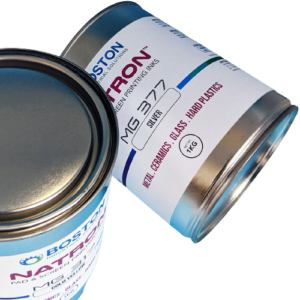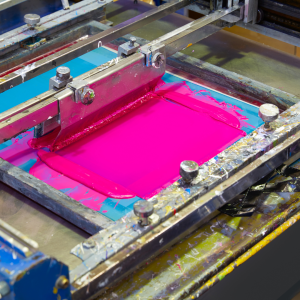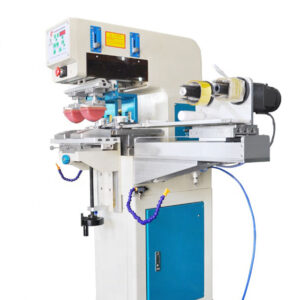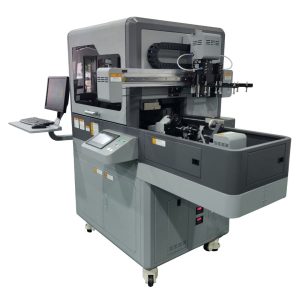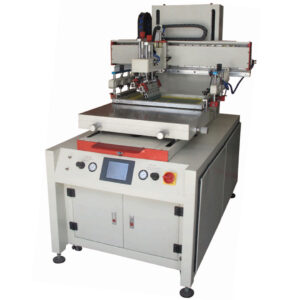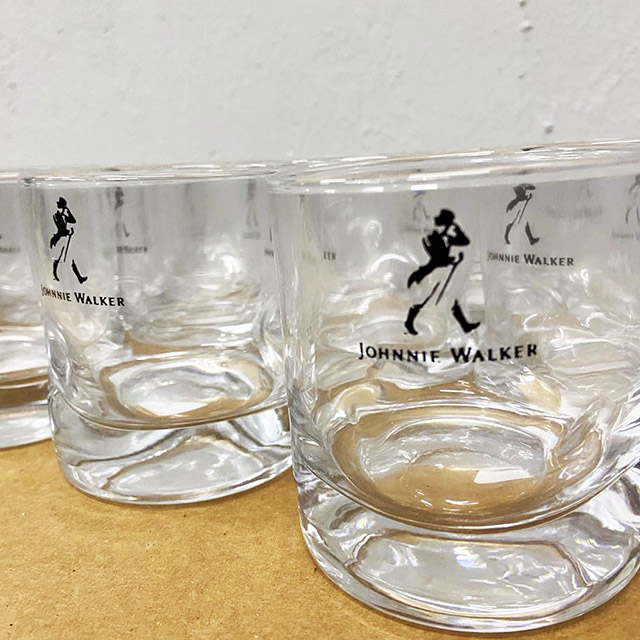Printing on glass methods
Printing on glass is important because it enhances the use and the value of glass. Printed glass is both useful and functional for many industries. These include industrial, automotive, aerospace, promotional products, architectural industries. There are many ways to print and decorate glassware. Some of the glass printing methods are pad printing, screen printing, and digital UV printing. These are the most popular ways of decorating glass. Yet, to ensure the success of any glass-printing application, there are several factors to put into consideration. Some of the factors are the glass type, coating on the glass, printing process, ink type, ink color, curing process, durability, environmental, and sustainability requirements. These printing methods support different shapes, sizes, thicknesses, types of glasses, and allow the use of multiple colors.
Each of these methods has its own unique pros and cons. In this article we will focus on glass printing techniques, the pros, and cons of each glass printing method.
Pad Printing glass
What is pad printing? Pad printing (also called tampography) is a printing process that can transfer a 2-D image onto a 3-D object. This printing method is ideal to print on irregular and odd shaped glass containers. Pad printing allows a user to print up to 6 colors.
The pad printing process on glassware requires a pad printing machine and pad printing supplies. The pad printing supplies include pad printing ink, pad printing plates, and pad printing pads. Most pad printing equipment are up to 6 colors. While you can print 4 color printing process which would give you a full color print, this process is time consuming and hard to do. Additionally, for spot colors, this process is limiting. The good news is that many logos have less than 6 colors, typically 1 or 2.
Compared to other printing methods, pad printing has an exceptionally low cost per print. As a result, pad printing has a high return on investment (ROI). Additionally, Pad printing can be done on glass and any other type of substrate. It also works exceptionally very on most irregular shapes.
Pad printing set up cost is also low compared to other decorating and printing methods. This method also has a low learning curve. This is an advantage especially when training a new employee. You can learn more about the VOLTA Pad printing machines by clicking here. Along with the pad printing machine, you will also need a printing pad, ink cup for closed cup machines or an inkwell for open cup machine, pad printing ink, and an etched plate to begin printing. And then, you are ready to print. Overall, pad printing is ideal for high volume production and promotional products with simple logo designs that do not need 360 degree printing.
Screen Printing Glassware
Screen printing is a printing technique where a mesh is used to transfer ink onto a substrate, except in areas made impermeable to the ink by a blocking stencil. This glass ware printing method is one of the oldest forms of glass printing and is still in use today. It is suitable for printing interior, exterior, and consumer glass products. Screen printing method is ideal for high-volume, durable glass printing production. It is possible to print up to 10 colors.
The draw back for screen printing is the time and cost to set up each color especially when large quantities required are not large. The ROI is not good for low volume. Additionally, this method is the most time-consuming of the methods in terms of printing, but also when it comes to setting-up and cleaning.
Screen printing requires:
- – Screen printing inks, e.g., Natron™ MG Series inks for glass
- – A squeegee,
- – Multiple screens (if you are doing multi-color prints), and
- – An emulsion stencil.
Please note that, screen printing to print large simple designs without high details. Pad printing on the other had is perfect for printing high detailed designs with small logs on odd, shaped objects. Also, screen printing used more inks and requires a relatively larger space compared to pad printing. Lastly, screen printing can achieve a 360-degree print unlike pad printing. This makes this method of printing ideal for bottles and oval shaped containers.
UV Digital Printing on Glass
With advance in digital printing technology, it is now possible to print on flat and cylindrical glass objects. Digital printing is capable of printing full color onto flat, cylindrical, and tapered items. The artwork is created on a computer. This photo quality artwork or image is then sent to the UV printer which will transfer a high image resolution onto the object.
A key advantage of digital printing is high quality repeatable prints. On cylindrical items the final prints do not have a visible seam, which is the case with screen printing. The inkjet machine prints using UV digital printing inks to the glass. The ink cures using UV light inbuilt in the machine. The printed product is ready to ship immediately after printing.
Additionally, for printing companies looking to print multi-color designs, inkjet printing is the perfect method of glass decoration
UV inkjet ink adhesion testing
Printing on glass requires per-treatment (UV adhesion promoter). This helps the UV inkjet ink adhere permanently onto glass. You can use our Natron G1 Adhesion promoter to improve ink adhesion on glass. To ensure that the inks has properly adhered onto the glass, scratch, tape, crosshatch, and dishwasher tests need to be done. The first three tests ensure that the edges of the cuts are completely smooth and the surface stays fully intact after being scratched and crosshatched. Dishwasher test validates resistance properties of the inkjet ink and pretreatment method. For example the G1 Primer for glass creates an invisible molecular bonding which aids the ink adhere permanently onto the glass.
At Boston Industrial Solutions, we offer residential dishwasher test and/or commercial dishwasher tests at customer requests. We also perform ice test which involve immersing the printed glass product in ice for 24hours and applying thumb pressure and evaluating any image degradation. All of our tests use ASTM testing guidelines.
Do you have more questions? Please visit our support hub or visit our YouTube channel for the latest printing technology and news.


